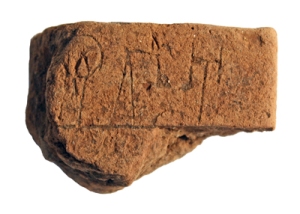Image: 2″ x 3″ tablet discovered during the 2011 excavation season in Iklaina, Greece (Messenia region), led by Dr. Michael Cosmopolous of the University of Missouri-St. Louis. (Photo: Iklaina.org, taken by Christian Mundigler.)
From the Paleolithic cave paintings in France (Pech-Merle; Lascaux), the famous hieroglyphs of Egypt, up until modern-day languages and writing systems, the profundity of the development and evolution of the written language (and the fact of writing itself) is often overlooked. Until, that is, something amazing is found, such as this Mycenaean clay tablet, perhaps 3,500 years old. The significance of this discovery cannot be over-stated: it is the oldest inscription to ever have been found (thus far) in European and Greek soil. It is a clay plate written in a script known as Linear B.
According to To Vima (TO BHMA), a Greek daily newspaper, it has the potential to change much of the data and knowledge regarding the use of Linear B and the spread of writing. It is a syllabic script that was used for Mycenaean Greek (16th to 12th centuries BCE). It is generally thought that the application of this script was for administrative purposes and there are more than five thousand documents (mostly clay tablets) that contain this script (1).
According to the 2011 report, the focus was on the Cyclopean Terrace and Building X. South of the Terrace painted sherds were uncovered, along with animal bones (mostly of pigs and sheep/goats). To the north of the Terrace were two deposits, the upper one containing pottery. I don’t know where exactly the tablet was found (alas), which I speculate would shed light on what the tablet was recording, but my guess is that it could have accounted for the livestock, being that the finds appear to have consisted mostly of various types of pottery in addition to the remains of animal bones.
When we look at ancient scripts such as Linear B, we are looking at the early foundations of writing. What is interesting (to me), is that if this script was indeed only used in administrative contexts, not reflecting the spoken language, it shows that at this time (correct me if wrong!) there were two parallel languages: the written language and the spoken language. Fascinatingly, the two gradually merged and perhaps that is why scripts such as Linear B fell out of use.
Sources:
(1) Anne-Marie Christin (ed.), A History of Writing (Paris: Flammarion, 2002), 200.
For a summary of information on Mycenaeans, click here

